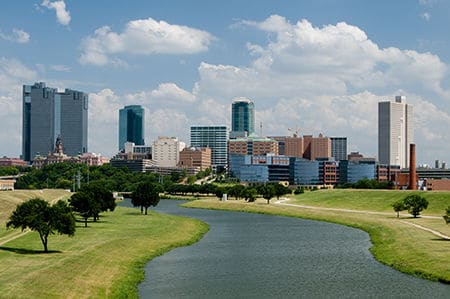Water, Water
The draft 2017 state water plan is available for viewing at http://www.twdb.texas.gov/waterplanning/swp/2017/doc/DRAFT_2017SWP.pdf
Those attending the nation’s largest regional water conference encountered a perfect storm as Fort Worth hosted an event designed to tackle future water challenges today.
“There’s a quote attributed to a meteorologist that Texas is a land of perpetual drought interrupted by the occasional devastating flood. I think we’ve experienced that and lived it in the last year or two and the last two days,” said Bech Bruun, chairman of the Texas Water Development Board.
Offering opening remarks at the April 19-22 Texas Water 2016 conference, Bruun acknowledged aging infrastructure and water supply challenges while applauding local and state agencies for proposing ways to tackle those issues.
“The reason why I’m so confident today about where we stand is I’ve had the opportunity to see how we’ve learned from 2011, and I think that’s most evident in our newest state water plan,” Bruun said at the Fort Worth Convention Center gathering.
Adopted every five years, the state water plan outlines ways to address future water needs and ways to fund those initiatives. From metering technology to wastewater disposal, virtually ever aspect of water and wastewater gained attention at the event, where representatives from local governments and private industry — including those from Fort Worth-Dallas — convened.
“In Fort Worth and Dallas, the Metroplex as a whole, I think the big issue is infrastructure,” said Patricia Cleveland, assistant regional manager of planning and development for the Trinity River Authority of Texas, the Arlington-based conservation and reclamation district that provides water within the nearly 18,000-square-mile Trinity River Basin, among other services.
“I think we face the same challenges of meeting regulatory needs and in educating the public about how our resources can be recycled,” Cleveland said.
Among the hundreds of exhibitors promoting products and services at the conference was WaterSmart Software.
“What we hope to do is two things: help them [prospective clients] understand their customers and help engage their customers,” said Dominique Gomez, director of operations and market development with WaterSmart Software, a California-based firm planning to announce its first Texas client later this month.
Its product focuses on determining water needs for each of its clients and, in turn, saving them money otherwise spent in water overuse.
“Traditionally, water utilities haven’t engaged a lot [with customers]. Beyond the monthly water bill, there’s not a lot of communication. What we are seeing is a need to communicate a lot more,” said Gomez, pointing to lead contamination in Flint, Michigan’s water supply as an example of what can occur when customers are not engaged.
“That is a real tragedy. Even if people have safe drinking water, they are still concerned. They want to learn more,” Gomez said.
That three government workers were charged with crimes related to their roles in Flint’s water crisis on opening day of the Fort Worth conference echoed the immediacy of water safety. And with Houston facing widespread flooding and Fort Worth hammered with hail and thunderstorms as the conference began, the issue of water was literally at the convention center doorstep.
Whether in the exhibit hall or in conference rooms, state water plan discussion dominated opening day. With the public comment period on a preliminary draft scheduled to end at 5 p.m. Monday April 25, state legislators are mulling a $62.6 billion vision whose capital costs would fund the permits, design and water and land acquisition rights to construct projects considered necessary to implement some 5,500 recommended strategies.
“We have 5,500 water management strategies this year compared to 3,000 five years ago, a significant increase in conservation strategies like water line replacement and advanced meter technologies. It’s a much more diverse plan that we had just a few years ago,” Bruun said.
With the state population expected to surge 73 percent between 2020 and 2070, the need to supply enough water is critical. Though state water demand is expected to increase by only 17 percent in that time, from about 18.4 million acre-feet per year in 2020 to about 21.6 million in 2070, the existing water supply — including surface water, groundwater and reuse water — is expected to drop by about 11 percent, from 15.2 million acre-feet per year in 2020 to about 13.6 million in 2070, according to Texas
Water Development Board, expected to unveil its final proposal next month.
Fort Worth is among cities that would be most affected by the plan, as Cowtown lies in one of two regions expecting the most population growth. More than half of the projected population growth is expected to occur in the Dallas-Fort Worth and Houston areas.
Among strategies underway to address the area’s future water needs is an integrated pipeline planned to transport water from Lake Palestine.
As with previous state water plans, the latest draft is based on future conditions that would exist if the worst recorded drought in Texas history would recur. What’s known as the “drought of record” would occur when water supplies are at the lowest and water demand is at its highest.
“If strategies are not implemented, approximately one-third of Texas’ population would have less than half the municipal water supplies they will require during a drought of record in 2070,” reads a portion of the draft plan.






